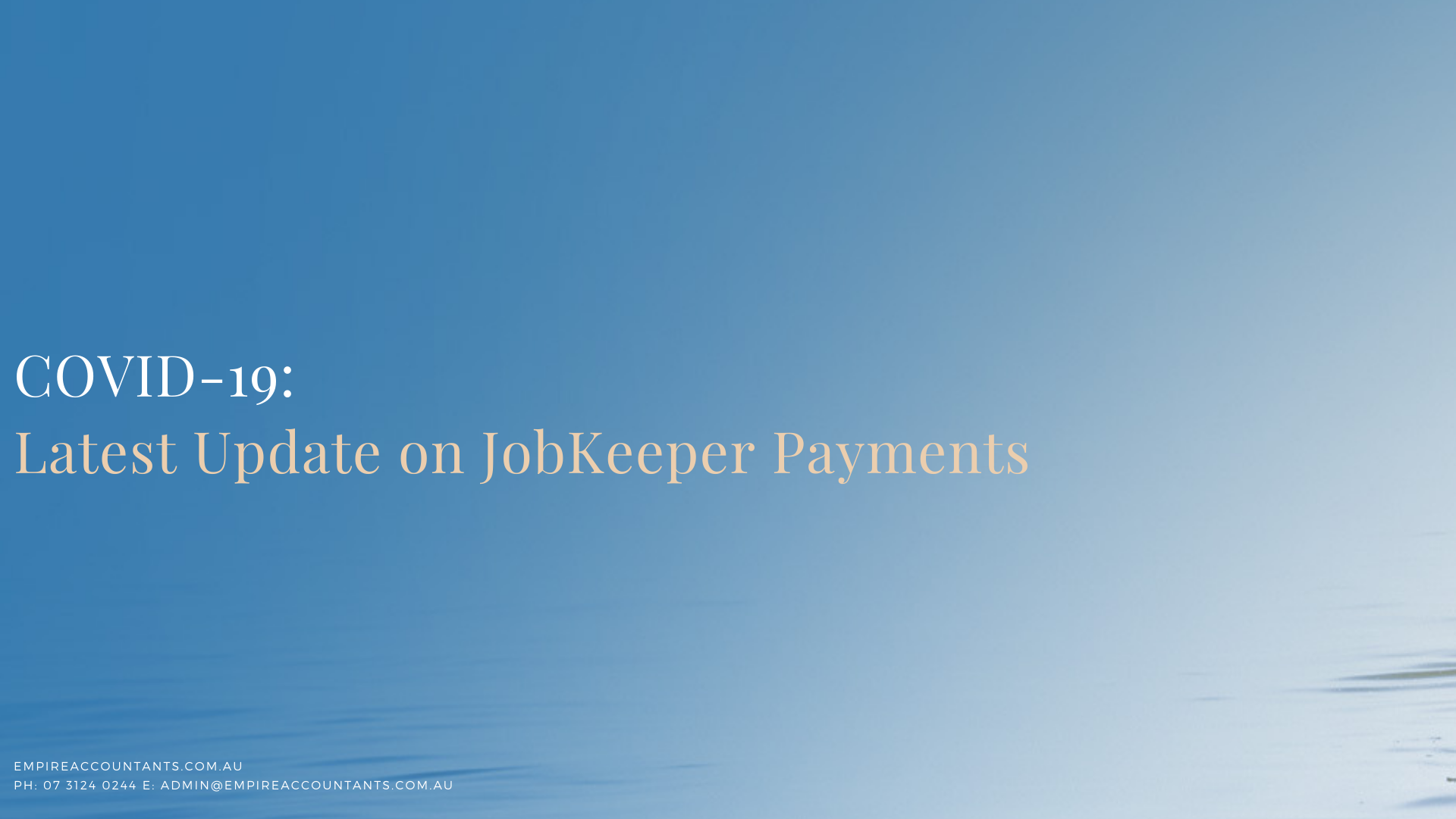COVID-19: Update JobKeeper Payments & Reporting
Posted 6 May '20

Posted 6 May '20

Over the past few weeks there have been changes, developments, enhancements and clarity provided by the ATO regarding JobKeeper. Some helpful, some to be desired, but all in all JobKeeper is certainly keeping us Accountants on our toes!
Please see below update for those of you who are DIY’ing your JobKeeper applications.
Here’s a quick recap!
Step 1 – Enrolment
This was the main topic of our last update so you should have completed this by now. If you haven’t and you believe you are eligible for April reimbursements, you still have time.
The ATO have extended the enrolment date to 31 May 2020.
Please note though, if you have employees and have to organise top-up pays for these employees; these are to be processed and paid no later than 8 May 2020 (that is this Friday!).
There is a requirement to nominate your employees and notify the ATO through Single Touch Payroll. Your Payroll Software (i.e. Xero) will provide you with the necessary steps and guides to complete this.
Step 2 – Employee and Eligible Business Participant Identification
The next step is to complete a final confirmation of eligible employees and/or nominate eligible business participant (if any). It is noted on the ATO site that you are only required to complete this step once.
It is important to ensure there has been no change to circumstances which may impact you or your employee’s eligibility for the scheme. Common reasons in change of circumstances can include:-
– In receipt of government parental leave or dad and partner pay;
– In receipt of total incapacitation for work and receiving payments under an Australian workers’ compensation law;
– In receipt of another government support program (i.e. JobSeeker);
– Under a casual arrangement and have secured a permanent position elsewhere (applies to both employees and eligible business
participants);
– Employee is no longer employed by you (rightful termination or resignation); or
– Have agreed to be paid under another employers JobKeeper Scheme and have notified you of this.
If any of the above circumstances apply, it is important that you determine the date the change commenced and whether it is relevant for the fortnight you are applying for, or if it applies to a future fortnight.
If you have employees it is important that you obtain the ATO Employee Nomination Form from the employee and they have agreed to be included in this scheme by you. If you are nominating as an Eligible Business Participant it is important you complete the ATO EBP Nomination Form and retain on file.
Lastly, you also need to ensure that you have paid the eligible employees above the required amount of $1,500 per fortnight before 8 May 2020. If you have not, you will not be entitled to receive any reimbursement under the JobKeeper Scheme.
If you are not counting yourself an as an employee and wishing to apply as an eligible business participant, you will be required to confirm your TFN at this stage. Please ensure you have this handy.
If you are a sole trader, partner in a partnership, operate through a company or trust and don’t pay yourself a
wage, you would be considered an Eligible Business Participant.
There is no requirement for you to pay yourself $1,500.

When you plan with intention - and pair it with accountability - you’re not just hoping things will work out. You’re building a business that will.
.jpg)
Let’s face it; bookkeeping isn’t the most exciting part of running a business. However, it’s one of the most important! Keeping your financial records in check not only helps you stay on top of your business but moreover ensures you're meeting Australian Taxation Office (ATO) requirements without stress or penalties.